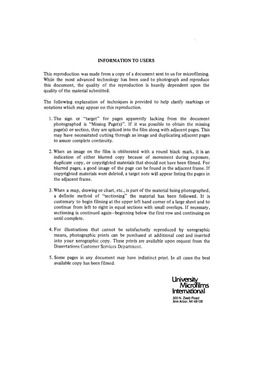| dc.contributor.author | Furukawa, Yasu. | en_US |
| dc.date.accessioned | 2013-08-16T12:28:57Z | |
| dc.date.available | 2013-08-16T12:28:57Z | |
| dc.date.issued | 1983 | en_US |
| dc.identifier.uri | https://hdl.handle.net/11244/5160 | |
| dc.description.abstract | Conceptually and epistemologically, Staudinger's macromolecular theory was rooted in the traditional organic-structural approach to polymers, while his opponents vigorously supported the aggregate theory of colloid-polymers, reflecting the newly-risen physicalist approach. The German macromolecular debates in the 1920s and the 1930s also involved the issues of setting disciplinary territories (organic versus colloid chemistry) in dealing with colloid-polymers, and of the priority claims concerning the long-chain molecular concept between Staudinger and Kurt H. Meyer. | en_US |
| dc.description.abstract | Carothers embarked on his investigations on polymerization within the fundamental research program at the Du Pont Company in the late 1920s, while Staudinger's chemistry was still under attack in German academic circles. Although adopting the macromolecular concept, Carothers departed from Staudinger's method of demonstration: a student of Roger Adams' Illinois school of organic synthesis, he used the synthetic approach to polymer study, in contrast to Staudinger's analytic method. In the Company's framework, his theoretical work on the macromolecular synthesis was led to practical applications such as nylon within a short period. The two distinct approaches of Staudinger and Carothers turned out to play complementary roles for the establishment of the macromolecularity of polymers. Additionally, Carothers' industrial success became a key factor for the legitemization of macromolecular chemistry in society. | en_US |
| dc.description.abstract | By the 1940s the charismatic professor Staudinger successfully spread macromolecular studies in the academic setting of the Third Reich. Meanwhile, under the influence of the industrial researcher Carothers, there emerged the first generation of macromolecular chemists in American universities in the 1930s. Carothers' case thus reversed the traditional relationship between science and industry, in which industry only followed university science. | en_US |
| dc.description.abstract | This study examines the emergence of macromolecular chemistry, the chemistry of large molecules, between 1920 and the mid-1940s, with special emphasis on the scientific work and activities of the German chemist, Hermann Staudinger (1881-1965), and the American chemist, Wallace Hume Carothers (1896-1937). These two men laid most of the theoretical and practical foundations of this scientific field. In intellectual, social, and personal dimensions, this study expounds and contrasts the origins and development of their scientific thought, and illuminates the way in which they and their German and American followers elevated their working field into a new branch of chemical science toward the period of World War II. | en_US |
| dc.format.extent | xiii, 216 leaves : | en_US |
| dc.subject | History of Science. | en_US |
| dc.title | Staudinger, Carothers, and the emergence of macromolecular chemistry / | en_US |
| dc.type | Thesis | en_US |
| dc.thesis.degree | Ph.D. | en_US |
| dc.thesis.degreeDiscipline | Department of History of Science | en_US |
| dc.note | Source: Dissertation Abstracts International, Volume: 44-06, Section: A, page: 1899. | en_US |
| ou.identifier | (UMI)AAI8324888 | en_US |
| ou.group | College of Arts and Sciences::Department of History of Science | |
